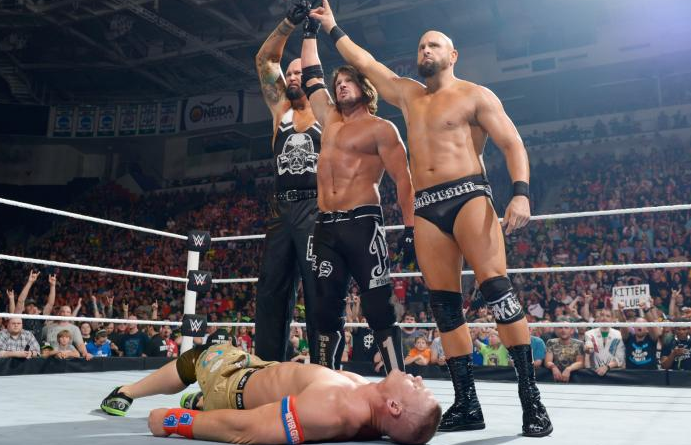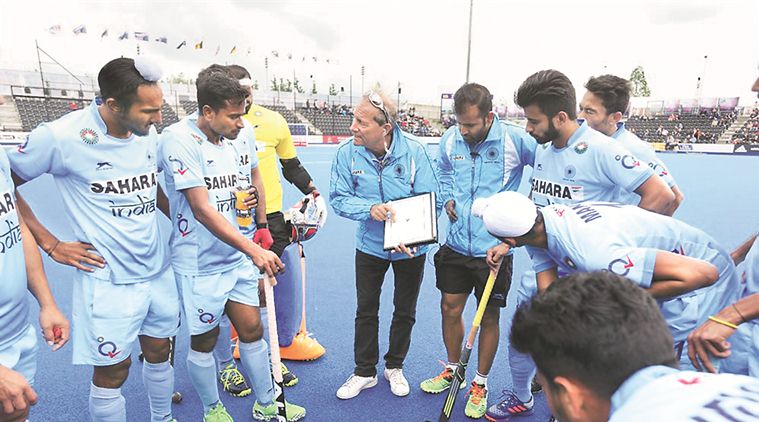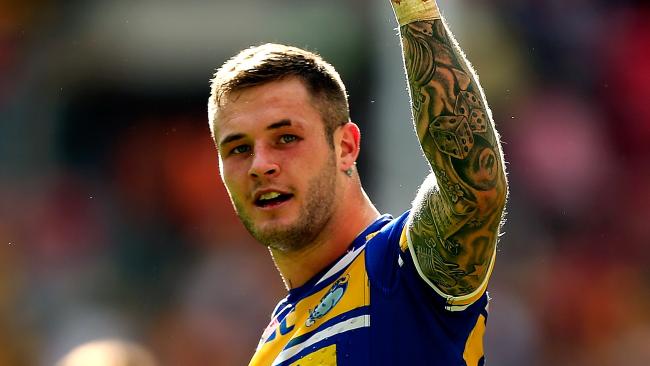
Turn on any recent episode of WWE Raw or SmackDown and chances are there will be somebody on the screen you don’t recognize, unless you’re brave enough to trek through the 6+ hours of programming that the E puts on every week.
Whether it’s the Canadian brawler Kevin Owens, the high-flying Sami Zayn or the steampunk queen Becky Lynch — the invasion of new talent has been unrelenting, leaving lapsed fans scrounging Internet message boards trying to figure out who they should be rooting for.
After years of fans complaining about seeing the same ol’ feuds over and over, the company has introduced dozens of new Superstars to audiences over the past year, ranging from bruising heavyweights to a burgeoning Women’s Division that rivals the action put on by the men. This influx of new talent has been so sudden and so jarring that WWE has even coined a term for it: The New Era.
While the Superstars in this New Era might be completely unrecognizable for a lot of fans, hardcore wrestling zealots (aka the IWC) know them as a virtual who’s-who from WWE’s NXT division, combined with outsiders from the indies and overseas circuits, like an AJ Styles or Shinsuke Nakamura.
But despite the fresh feel of the New Era, it’s impossible not to get a sense of deja vu about it. See, back in the mid-‘90s, WWE was in the same situation. Its biggest stars (Hulk Hogan and Macho Man) were getting older and leaving the company, and Vince McMahon realized he needed to build a roster for the future. This roster had to be far younger and more versatile than the mountainous powerhouses of the ‘80s, especially in the wake of the company’s steroid scandal. And obviously, this new direction needed a catchy name to go by.
Enter: The New Generation
Like The New Era, this New Generation (a phrase Vince McMahon loved to belt out as an announcer in the ’90s) featured a huge increase in fresh Superstars getting the spotlight, including Bret Hart, Diesel, Razor Ramon, Owen Hart, Triple H, Yokozuna, The Undertaker and Shawn Michaels. Some of these names — like Diesel and Ramon — were completely new to the company, while others — notably Michaels and Bret Hart — were former undercard performers who were now given a chance to shine in the now Hogan-less main event scene.
The seeds for this new era were planted following Hogan’s first WWF departure following Wrestlemania VIII in 1992, but it didn’t hit its stride until 1994, when Bret Hart scored his second WWF heavyweight title against Yokozuna at Wrestlemania X. It lasted until the middle of 1997, when WWE shifted gears again for the Attitude Era.
Outside of a few heavyweights, the wrestlers in the New Generation were noticeably smaller, more athletic and better all-around grapplers than their ‘80s counterparts. In the wake of the company’s nearly crippling steroid trial, McMahon pushed speed over size, as Michaels and Hart won over crowds with their mat wrestling ability and high-risk moves, rather than their vascular physiques.
Following that model, New Era talents like Styles, Zayn and Owens regularly showcase their phenomenal in-ring abilities, never leaning on hardcore bloodbaths or posedowns like wrestlers of the past. Their physiques are also shockingly natural, as evidenced by the fact that they actually have necks. Most of these New Era talents would have fit right in with the New Generation — just imagining Styles/Michaels or Zayn/Hart should be enough for fantasy bookers to start salivating.
But it might not be in the WWE’s best interest to follow The New Generation too closely.
What To Learn From The Past
Great wrestling. World-class athletes. New faces. Sounds perfect, right? Well, you see, for all the new ground that the New Generation tried to break, it wasn’t particularly successful. The mid-‘90s (more specifically 1993 through the middle of 1997) were among some of WWE’s low points in terms of box office, and a lot of this New Generation shouldered the blame.
See how Wrestlemania 32 just filled up ATT Stadium with more than 100,000 fans? Well Wrestlemania XI, which was held in 1995, brought just a shade over 16,000 people to the Hartford Civic Center. Not only that, but WWE had to resort to holding WWE Raw in high school gymnasiums around the country during some of these lean times. It was obvious this new direction just wasn’t clicking with fans. Thankfully, today’s talent isn’t competing during a significant downturn in the industry. Live crowds are still showing up, and the WWE Network should be a constant stream of revenue into the future. But if the company makes the same mistakes as it did in the ‘90s, history could always repeat itself.
Before Stone Cold Steve Austin turned the company’s fortunes around with the Attitude Era, The New Generation era was plagued by weak champions, including lengthy runs by Yokozuna and, most notably, Diesel. Much like Roman Reigns is now, Diesel was pushed quickly into the spotlight — maybe even too quickly. The downturn in business wasn’t caused by Big Daddy Cool’s push, but it was obvious that fans didn’t buy into him enough to pull WWE out of the fire.
There are obvious similarities between Reigns and Diesel’s championship run, and it wouldn’t come as a shock to have him classified as this era’s Big Daddy Cool, rather than the second coming of Cena. However, a weak world title run was just one part of The New Generation’s failure.
Aside from the Diesel debacle and the steroid trial and sex scandals that hampered the company during this time, it was the complete lack of depth that played a huge part in the wheels coming off. Sure the main events were usually crowd-pleasers, but before those began, fans dealt with nonsensical filler like the dreaded Hog-Pen Match or anything involving Duke The Dumpster Drowsy or The Goon.
There was no New Day to wake up the crowd or Brock Lesnar to come along every few months to suplex the world into oblivion or phenomenal four-way Intercontinental title matches like we see today. Outside of Bret Hart (who took almost all of 1996 off), Shawn Michaels, Undertaker, Razor Ramon and Diesel, there weren’t many people who could carry the company at the time. Mankind didn’t come around until ’96, Triple H was still green, The Rock looked like this and Stone Cold was in a dead-end gimmick known as The Ringmaster. Vince McMahon touted the New Generation as “hip” and “exciting,” but he never really let go of the campy cartoon characters that fell out of vogue at the turn of the decade.
As divisive as Roman Reigns is, at least he has talent like AJ Styles, John Cena, Triple H and Seth Rollins to headline PPVs with; meanwhile, a young champion like Diesel had to get over against the likes of Mabel or Tatanka when he wasn’t lucky enough to go against Hart or HBK.
Outside of the top five or six guys, there was absolutely no depth to this new generation, especially with competition from WCW bringing in younger talent like Chris Jericho, Eddie Guerrero and Rey Mysterio. Without a deep roster of credible contenders, you had the Diesels and Bret Harts of the world going up against no-interest rivals like Hakushi, Isaac Yankem DDS and Jean-Pierre LaFitte. You can have the best handful of main eventers the world has ever seen, but if their competition is comprised of middling journeymen, those arenas still won’t be full.
And depth is exactly where the current WWE product can succeed where it failed in the mid-’90s. Styles, Reigns, Dean Ambrose, Seth Rollins, The New Day, Enzo Big Cass, Zayn, Owens — the names just keep coming. Plus, it’s not like John Cena, Chris Jericho or Randy Orton are going anywhere. It’s like everywhere you look there’s a future bright spot on the WWE roster – they just need time to reach Superstar status.
The New Generation didn’t have any of this. Once you go past the top of the card, you were left with a roster of curtain jerkers like The Bodydonnas, Kama, Waylon Mercy and Mantaur (this is a thing that happened). Try this for fun: watch a Bastion Booger match side-by-side with the Women’s Division triple threat match from Wrestlemania 32 and you’ll start to see why the New Generation flickered out so quickly.
The New Generation was a concept – one that didn’t quite work – but the idea was air-tight. It was supposed to be an influx of new, young, exciting talent to help fans forget about the old days and look ahead to the future. Unfortunately it just didn’t have the depth of talent or engrossing story lines to stick the landing. If WWE learns from this, The New Era could be the finished product that actually fulfills that promise.








